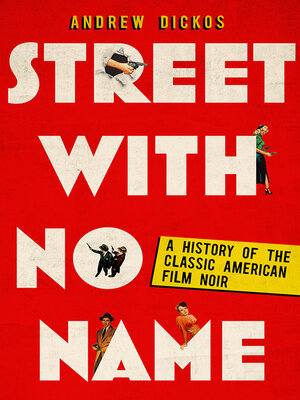
Sign up to save your library
With an OverDrive account, you can save your favorite libraries for at-a-glance information about availability. Find out more about OverDrive accounts.
Find this title in Libby, the library reading app by OverDrive.



Search for a digital library with this title
Title found at these libraries:
| Library Name | Distance |
|---|---|
| Loading... |
Andrew Dickos's Street with No Name traces the film noir genre back to its roots in German expressionist cinema and the French cinema of the interwar years. Dickos describes the development of the film noir in America from 1941 through the 1970s and examines how this development expresses a modern cinema. He argues that, in its most satisfying form, the film noir exists as a series of conventions with an iconography and characters of distinctive significance. Featuring stylized lighting and urban settings, these films tell melodramatic narratives involving characters who commit crimes predicated on destructive passions, corruption, and a submission to human weakness and fate.
Unlike other studies of the noir, Street with No Name follows its development in a loosely historical style that associates certain noir directors with those features in their films that helped define the scope of the genre. Dickos examines notable directors such as Orson Welles, Fritz Lang, Otto Preminger, and Robert Siodmak. He also charts the genre's influence on such celebrated postwar French filmmakers as Jean-Pierre Melville, Francois Truffaut, and Jean-Luc Godard.
Addressing the aesthetic, cultural, political, and social concerns depicted in the genre, Street with No Name demonstrates how the film noir generates a highly expressive, raw, and violent mood as it exposes the ambiguities of modern postwar society.







